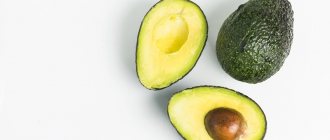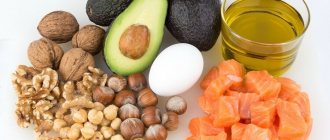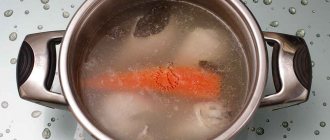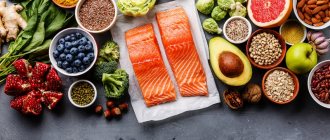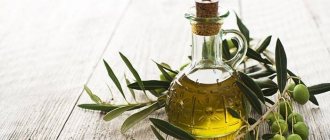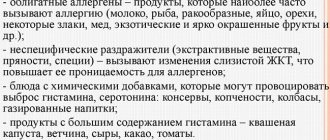The most ingrained myth of nutritionology is that fat is harmful. Every second “dietology guru” builds on this their own nutrition programs, which sell quite well on the market. But times change, and not every pseudo-business can withstand competition and the influence of scientific knowledge. Humanity is at the stage of debunking myths, especially in the food industry. The craze for healthy eating and a rational lifestyle will prolong the life of our generation and make it much easier for our followers. Let's figure it out: what is fat, how is it related to the reproductive system, weight loss and all human life?
Vegetable fat: what is it?
Vegetable fats are lipid compounds contained in the nutritious parts of plants. Humans eat such sources of these substances as nuts, oil-rich plant seeds, olive and avocado pulp, fruit seeds, and grain germs.
The listed products also serve as raw materials for extracting oils that are actively used in cooking and the food industry.
Product table
People consume different types of foods daily, which include animal and vegetable fats. This list includes the products presented in the table. Saturated fat content per 100 g of product:
| Name | Saturated fat, g |
| Meat products | more than 80 |
| Vegetable oils | from 3 to 36 |
| Dairy | from 1.5 to 23 |
| Confectionery | from 4 to 11 |
| Fish and seafood | from 10 to 20 |
| Bread, cereals, cereals | less than 2 |
| Vegetables, fruits (except avocados) | less than 1 |
The human body needs protein foods, so you need to include meat dishes in your diet. The food with the highest saturated fat content at 21.56 g is lard. In next place in terms of this indicator per 100 g of product is duck meat without skin - 8.2 g. Goose meat and bacon contain about 6 g of saturated fat, and lamb without fat and boiled fatty sausage - about 5 g.
It is necessary to include dairy products in your daily diet.
Of these, 23.56 g of saturated fat contains butter, sour cream with a fat content of 20% is 6.38 g, and 10% is about 3.2 g, almost the same amount includes eggs and whole milk. Low-fat cottage cheese and milk contain only 0.15 g of fat per 100 g.
Among confectionery products, milk chocolate has the most saturated fat (10.4 g). In glazed cakes these substances are present in the amount of 6 g per 100 g of product, and in chocolates there are about 8 g of them. They give sweets a special taste and increase their stickiness.
In the vegetable oil group, coconut oil contains a high amount of saturated fat, which amounts to 36.87 g per 100 g of product. Cocoa bean oil contains slightly less of them - 30.43%, as well as palm oil - 24.75 g. Walnut oil contains about 3.63 g of saturated fat.
Top 10 products
Products containing saturated fats are beneficial for the body within the daily norm, which is 7-10% of the total calorie content of food.
To avoid gaining excess weight, you need to know that the maximum amount of fat contains:
- pork lard - saturates the body with vitamin E, which maintains muscle tone;
- butter - ensures better absorption of protein due to the content of vitamins C and E;
- beef and pork liver are sources of vitamins E, K and H, which form the skeletal system and normalize the process of energy metabolism;
- milk - supplies vitamin C to the tissues, which is involved in the synthesis of hormones and protein, but it can cause allergies due to the lactose content in it, which causes a stressful state associated with the intake of fats that cause inflammation; unpasteurized dairy products are saturated with important the body with zinc and biotin;
- eggs - contain a group of B vitamins, which ensure the normal course of redox reactions; their frequent consumption in raw form leads to impaired absorption of biotin or vitamin B7;
- vegetable oils - products with a liquid consistency, which are characterized by a high content of fatty acids, depending on the degree of their purification, they can be unrefined and refined, the latter contain 2-2.5 times less fat than the former;
- nuts and seeds - can replace cheese, meat or chicken, so it is better not to supplement these products with them, but to eat them separately in salads, adding sesame seeds, peanuts, sunflower seeds, walnuts;
- fish - herring, salmon, sardines, tuna, mackerel, oysters - the best sources of vitamin F, which is essential fatty acids Omega-3, Omega-6 and Omega-9, saturate the body with vitamins B2, B3, B7, B12, iron and zinc ;
- avocado is a fruit with a high content of vitamin F, which is responsible for the condition of the skin, hair, cardiovascular system, and brain activity;
- sausages - products containing large amounts of salt are a source of saturated fat.
To replenish riboflavin (B2) and niacin (B3) in the body, lovers of animal products can eat eggs, salmon, oysters and various seafood, which prevents cracking of the corners of the lips. This problem can be solved by consuming products of plant origin: dried tomatoes, lentils, peanuts, sesame seeds.
Vegetable fats: composition and nutritional value
The importance of oils as a component of human nutrition is as follows:
- They dissolve vitamins D, A, E. Without combining with lipid, vitamins cannot participate in the body's metabolic processes.
- Fats are associated with substances valuable for health - phospholipids and tocopherol compounds. They have a beneficial effect on the myelin sheaths of brain neurons, blood vessels, vision, and skin condition. Lipid deficiency leads to deterioration in the functioning of these systems and organs.
- Unsaturated acids contained in oils and raw materials for their production help reduce the content of low-density lipoproteins in the body, a type of cholesterol that can accumulate on the walls of blood vessels, causing atherosclerosis.
- Getting enough lipids from food is important for the female reproductive system.
A person who is not overweight can receive about 80 grams of fat per day from food. Half of them are plant lipids.
Be sure to read: Fast carbohydrates: list of products, table, what they are needed for, which ones are suitable for weight loss
It is recommended to add oils or seeds to salad or cooked porridge. When they are subjected to heat treatment (including frying in oil), the properties needed by the body are reduced due to oxidation.
What are the benefits of fat?
The most important nutritional components of vegetable fat: mono- and polyunsaturated fatty acids, vitamins, phytosterols, phospholipids. Let's look at each element in more detail. Fat is the most concentrated source of energy. 80% of a person’s energy reserve is formed by fat, which is why it is vitally important to compensate for its deficiency and constantly introduce new fatty combinations into the diet. Polyunsaturated fatty acids are responsible for:
- formation of a strong structure of the cell membrane, its stability and high-quality functioning;
- acceleration of metabolic processes;
- removing “bad” cholesterol from the body;
- strengthening the walls of blood vessels, increasing their elasticity and reducing permeability.
Phytosterols help cope with bad cholesterol - reduce its concentration, speed up metabolism and remove it from the body. Phospholipids take part in fat metabolism, making it efficient and less energy-consuming. The component is responsible for the integrity and strength of cell membranes, promotes high-quality and rapid cell growth. Phospholipids are one of the building blocks of nervous tissue, brain and liver cells. The plant component is also responsible for reducing the level of formation of oxidation products in the blood.
Vegetable oils contain retinol, tocopherol and provitamin A. They have the following properties:
- protecting the body from radiation exposure;
- prevention of cancer development;
- activation of protein synthesis;
- protection against diabetes and a number of diseases of the cardiovascular system;
- increasing the degree of absorption of beneficial vitamins and nutrients.
A lack of vegetable fats in the body leads to serious health problems. Energy metabolism deteriorates and the level of immune defense decreases. The person feels apathetic, tired, and unable to perform routine duties. Lack of fat causes hormonal imbalance and can lead to irreversible consequences.
Categories of vegetable fats
Based on the structure of triglyceride molecules, lipid categories are distinguished:
- Unsaturated ones bring the greatest benefits: they improve vision, texture and appearance of the skin, have an anti-inflammatory effect, and prevent the formation of plaques in large vessels. It is to provide them that oils and seeds should be included in the diet. Among animal products, they are found in marine fish.
- Saturated foods increase the load on the heart and add kilograms. Lard and butter are rich in them, and in any vegetable raw material the percentage of such fats is small.
- Trans fats are produced artificially through the hydrogenation of conventional oils. They have a solid texture and are used in industry to reduce the cost of production as a substitute for expensive animal fats (margarines, dairy products) and vegetable fats (a substitute for cocoa butter in the production of confectionery bars, icing for chocolates). They bring only harm to the body. Research shows that their effects are similar to those of high consumption of saturated fat. They contribute to the development of atherosclerosis and heart disease. It is important to read the ingredients on product labels and avoid purchasing if you see the words “cocoa butter substitute” or “palm oil.”
According to the production method, hot and cold pressed oils are distinguished. With the second method, more substances important for health are retained in the oil. It is recommended to buy only unrefined oils.
Types of fats in the body
Fats can enter into chemical reactions by adding phosphate, sulfate or other groups, resulting in the following types of fats being formed in the cell:
| Connection class | Structural features | Main representatives | Biological role in the body |
| Phospholipids | The lipid is connected to a phosphoric acid residue | Phosphatidylcholine (aka lecithin), phosphatidylinositol | Form cell membranes |
| Sphingolipids | Derivatives of sphingosine (refers to aliphatic amino alcohols) | Ceramides | Protect the skin and prevent moisture loss |
| Glycolipids | Fat bound to carbohydrate | Cerebrosides and gangliosides | Form the sheaths of nerve cells |
| Lipoproteins | Fat bound to protein | High and low density lipoproteins, chylomicrons | Transport molecules that carry fat droplets are involved in the utilization of ingested fats and the mobilization of fat depots during physical activity, for example |
| Steroids | Cyclic compounds derived from isoprene | Sex hormones, cortisol, vitamin D | Perform different functions: regulate the activity of the reproductive system, calcium-phosphorus metabolism, ensure adaptation to stressful conditions |
Of particular interest is the class of lipids known as fatty alcohols. Their feature is high solubility in water. They are used in cosmetics and are included in creams and other care products for the face and body. Fatty alcohols soften and moisturize the skin. These include:
- Cetearyl alcohol;
- Cetyl alcohol;
- Lauryl alcohol;
- Myristyl alcohol;
- Stearyl alcohol, etc.
Fatty alcohols, like other lipids, are synthesized in the human body and take part in metabolism. At the same time, we obtain the main raw materials for the synthesis of fats from food.
Demo lessons on the program “Nutriciology”
Get access
Is it possible to eat foods high in fat?
The listed products are sources of high concentrations of lipids, so they must be consumed in doses. People who are not overweight should include them in their diet in such quantities that, when converted to pure fat, there is no more than 40 grams per day.
Be sure to read: Tryptophan: what is it, what is it for, what products it contains, daily intake
For overweight people, cut this amount in half. Of animal fats, fish rich in essential acids is preferable. If a person does not have signs of atherosclerosis and hypertension, he can also consume butter, fatty cheeses, and lard in limited quantities.
Is there a connection between fats and weight gain?
The fear of consuming fats due to the possibility of gaining excess weight is associated with their high calorie content - a gram of lipids provides twice as many calories as a gram of proteins or carbohydrates. Indeed, when losing weight, it makes sense to keep the level of fat consumed under control.
However, we should not forget that different nutrients have different effects on biochemical processes in the body. Consumption of the contents of fat reserves begins when glycogen reserves in the liver are depleted and the intake of sugars from food is low, so the creation of a carbohydrate deficiency plays a key role in the process of losing weight.
Fat intake should be 10-20 grams lower than for a thin person. Preference should be given to olive and sesame oils, as well as red fish as sources.
Beneficial functions of lipids
Give up the idea of sticking to a low-fat diet, such a system will probably be effective - your body weight will decrease. But as a result, you will get a sickly, exhausted appearance, and health problems are possible. The daily fat intake for women when losing weight ranges from 60-80 g (including 20 g of plant origin), you can get more accurate figures after consulting with a nutritionist who will take into account all the important features of your body.
Why do you need fatty foods:
- gives energy, allows you to perform mental and physical work with enthusiasm and good results, promotes endurance and productive training;
- important for the nervous system - lipids are actively involved in the formation of brain neurons and nerve endings;
- increases immunity;
- promotes calcium absorption;
- gives a long-lasting feeling of satiety, which helps you stick to your diet and not break down;
- helps to well absorb many vital compounds - animal fat is useful because it delivers vitamins A and O, and vegetable oils are a source of tocopherol;
- stops the inflammatory process;
- promotes tissue regeneration, since cell membranes are made of lipids;
- normalizes hormonal levels, provokes the production of sex hormones, as well as dopamine and serotonin.
There is no need to strive to completely get rid of the fat layer; a person needs it, as it plays an important role. Namely, it protects against hypothermia, ensures reliable fixation of internal organs in the correct place in the abdominal cavity, and protects against injury.
If you ignore food that is a source of healthy fats, you will not be able to preserve:
- youth and elasticity of the skin, strength of nails, beauty of hair;
- reproductive function;
- good vision;
- high stress resistance and emotional well-being;
- healthy joints;
- clarity of mind and good mood;
- normal production of vitamin D by the body, as well as the ability to absorb vitamin compounds A, E, K;
- a firm commitment to stick to proper nutrition - because without lipids in your diet, you will constantly feel hungry.
We must also educate people about the consequences of eating too much fatty food. If you regularly exceed the norm of fat when losing weight, it is difficult to achieve the desired result, and in addition there is a risk of developing the following diseases:
- gallstones;
- stroke;
- gout;
- atherosclerosis.
And if you overuse foods containing trans fats, this can lead to deterioration of your skin and digestion. It is worth giving up chips and chocolates not only because of their high energy value, but also because of the negative impact on well-being and appearance.
The benefits and harms of vegetable fats
The beneficial effects of these substances on the body are:
- improving the elasticity of vessel walls;
- preventing the deposition of cholesterol accumulations in the lumens;
- formation of the structure of cell membranes;
- easy digestibility, low load on the gallbladder and liver compared to animal lipids;
- improving intestinal motility, alleviating constipation;
- binding of vitamins.
The negative aspects include the effects of trans fats on the body. To avoid it, you need to give up margarines, baked goods containing them, processed cheeses and chocolate-covered sweets.
Also, any fats, including cold-pressed oils, are subject to strict reduction in the diet of patients with inflammation of the pancreas, diseases of the liver and bile ducts.
